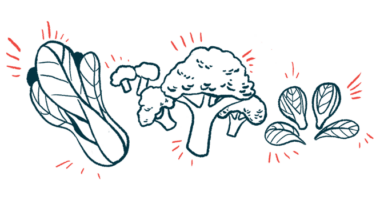The comfort food that diagnosed my dangerous drift from health balance
It took a slice of pumpkin pie to tune into the signals my body was sending me

The pumpkin pie and ice cream saved my life. Not in the dramatic, rush to the ER kind of way. Just in the quiet, revelatory way that only comfort food can. It was the first significant amount of non-protein food I’d eaten in weeks, and my body responded like it had been waiting for a signal. That slice of pie cracked open a realization: I had drifted far from balance, and my body was trying to tell me.
Fall is a season of preparation as there are leaves to rake, gardens to clear, and routines to shift. I went off on a tangent, fully absorbed in cleaning up the yard and making seasonal transitions. I wasn’t thinking about my health or my nutrition. I was focused on getting the fall work done.
A tangent, by definition, is off-center. It touches the circle but doesn’t stay within it. Any time we become obsessed with something — whether it’s productivity, a task, or even a health goal — we risk drifting from the center of balance. That’s what happened to me. Somewhere along the way, I stopped tracking my food. I stopped checking my chronic obstructive pulmonary disease (COPD) symptoms. I stopped checking in with my body.
Finally ready to listen
I didn’t plan to be on an extremely high-protein diet. It just happened. Quick meals, leftover chicken, and leftover roasts cooked in the crockpot were convenient choices that added up. A closer look told me I’d eaten very little that wasn’t protein for the better part of two weeks.
Then my body started whispering, and soon the whispers became shouts when my Fitbit gave me two warnings in one week about an irregular heart rate. My oximeter showed my heart rate jump from 40 to 145 within seconds. My kidneys weren’t producing much urine. I felt foggy in the afternoons. I could sit for long stretches, staring into space. I wasn’t checking my COPD Action Plan. I wasn’t listening to my body.
I didn’t know exactly what was wrong, but I sensed that something was amiss. My body had been whispering, then shouting, and I was finally ready to listen. I sat thinking about the symptoms — irregular heart rate, brain fog, low urine output — and began mentally tracing the threads. Hydration. Oxygen. Nutrition. Something had tipped out of balance. That’s when I reached for the cranberry juice.
I want to acknowledge that for some in the COPD community, such as the inspiring “COPD athlete” and others, a high-protein diet is a conscious and empowering choice. It supports muscle maintenance, energy, and recovery. Their stories are grounded in intention, research, and routine.
But mine wasn’t. This wasn’t a planned shift. It was a drift. I didn’t choose a high-protein diet. I fell into it while busy with fall preparations, skipping my tracker, and reaching for convenience. The difference between empowerment and imbalance is often awareness.
I’ve returned to my food and exercise tracker. I’m not doing this as a punishment, but as a kindness. I’ve reengaged with my COPD Action Plan, and what I’ve learned through this experience is that comfort food can be diagnostic. Sometimes what your body craves reveals what it’s missing. Tracking, I’ve come to realize, isn’t about control; it’s about care. It’s a way to listen before symptoms escalate.
Hydration, too, is foundational. When urine output drops, it’s a signal worth responding to early. I’ve also been reminded that oxygen and cognition are deeply linked. That afternoon fog wasn’t just fatigue. It was my body’s way of asking for attention. And finally, I’ve learned that seasonal shifts, as beautiful as they are, require intentional check-ins. Fall invites reflection, but it also calls for recalibration.
If you’ve drifted from your routine, you’re not alone. Life pulls us in many directions. But your body is always speaking. Sometimes, it takes a slice of pumpkin pie to hear it.
Note: COPD News Today is strictly a news and information website about the disease. It does not provide medical advice, diagnosis, or treatment. This content is not intended to be a substitute for professional medical advice, diagnosis, or treatment. Always seek the advice of your physician or other qualified health provider with any questions you may have regarding a medical condition. Never disregard professional medical advice or delay in seeking it because of something you have read on this website. The opinions expressed in this column are not those of COPD News Today or its parent company, Bionews, and are intended to spark discussion about issues pertaining to chronic obstructive pulmonary disease.







Barry Hoehn
Great information Caroline.
I’ll start listening to my body
Sydney Ann Warren
Caroline, I truly hope you realize how inspiring you are to so many…..I’m grateful to be one of your biggest fans.
Seriously, you have helped me immensely deal with this painful journey.
Thx you from my heart❤️
dawn sheakley
ive been dealing with copd for atleast 15 yrs and i get caught up in how much protein i need and know how easy it is get lost in it all but i still eat pumpkin pie!☺️
David A Sylvester
Thanks for the heads up Caroline and enjoy the pie👍
Phyliss DiLorenzo
Thanks so much for this reminder to keep track of what we are eating and not eating. So important. Balance is where we need to be. So glad that you realized what the problem was. Thanks so much for this wonderful reminder and article, Caroline!